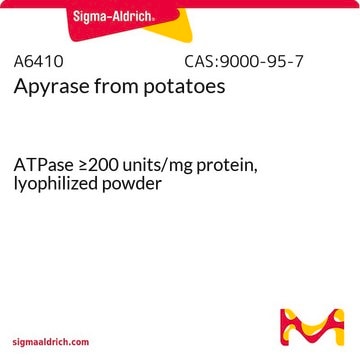A9655
Auramine O
Dye content, ≥80%, certified by the Biological Stain Commission, powder
Synonym(s):
4,4′-(Imidocarbonyl)bis(N,N-dimethylaniline) monohydrochloride, Basic Yellow 2, Pyoctaninum aureum
Select a Size
About This Item
Recommended Products
Product Name
Auramine O, Dye content ≥80 %, certified by the BSC
Agency
certified by the BSC
form
powder
composition
Dye content, ≥80%
technique(s)
microbe id | staining: suitable
color
yellow to green
mp
>250 °C (dec.) (lit.)
solubility
ethanol: 1 mg/mL, yellow to orange
λmax
370 nm in H2O
432 nm in H2O
application(s)
diagnostic assay manufacturing
hematology
histology
storage temp.
room temp
SMILES string
Cl[H].CN(C)c1ccc(cc1)C(=N)c2ccc(cc2)N(C)C
InChI
1S/C17H21N3.ClH/c1-19(2)15-9-5-13(6-10-15)17(18)14-7-11-16(12-8-14)20(3)4;/h5-12,18H,1-4H3;1H
InChI key
KSCQDDRPFHTIRL-UHFFFAOYSA-N
Looking for similar products? Visit Product Comparison Guide
General description
Auramine O is used for the staining of acid-fast organisms like coccidia.[1] Along with carbol, it generates brilliant yellow fluorochrome of tubercle bacilli. It is effective in detecting positive cases of tuberculosis.[2] Auramine O binds to the mycolic acid in the bacterial cell wall.[3]
Application
Signal Word
Warning
Hazard Statements
Precautionary Statements
Hazard Classifications
Acute Tox. 4 Oral - Aquatic Chronic 2 - Carc. 2 - Eye Irrit. 2
Storage Class Code
6.1C - Combustible acute toxic Cat.3 / toxic compounds or compounds which causing chronic effects
WGK
WGK 3
Regulatory Listings
Regulatory Listings are mainly provided for chemical products. Only limited information can be provided here for non-chemical products. No entry means none of the components are listed. It is the user’s obligation to ensure the safe and legal use of the product.
ISHL Indicated Name
Substances Subject to be Indicated Names
ISHL Notified Names
Substances Subject to be Notified Names
JAN Code
A9655-VAR:
A9655-BULK:
A9655-25G:4548173242293
Choose from one of the most recent versions:
Already Own This Product?
Find documentation for the products that you have recently purchased in the Document Library.
Customers Also Viewed
Active Filters
Our team of scientists has experience in all areas of research including Life Science, Material Science, Chemical Synthesis, Chromatography, Analytical and many others.
Contact Technical Service












